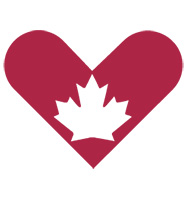The Burning of Washington Transcript
[Music]
By April 1814, a coalition of Europe’s great powers forced Napoleon to abdicate the throne of France and go into exile on the island of Elba. Britain was now free to turn its full attention to the war in America.
Admiral George Cockburn had been prowling the Chesapeake for a year prior to the British invasion and had become very familiar with the coastline. He knew that the area was weakly defended and advised the British commander-in-chief that Washington, Philadelphia, or Baltimore could be successfully attacked. It was hoped the raids would draw troops away from the Canadian border and avenge the destruction of private property in Upper Canada.
The British landed here at Benedict, Maryland. After months at sea the troops were in poor shape and their commanders wondered if they could handle the march through enemy territory in the blazing summer heat.
The U.S. forces, which included President James Madison himself, deployed at the crossroads of Bladensburg where they hoped to cut down the British as they attempted to cross the river.
The Americans had around 7,000 men, but most were poorly trained militia. The attacking British, under Major-General Robert Ross, had around 4,500 soldiers and 60 batteries of Congreve rockets.
While the rockets were inaccurate, this new weapon in the British arsenal could have a terrifying effect on enemy morale. As the redcoats crossed the bridge they came under heavy American fire and for a moment it seemed as though the whole British advance might stop right here. But as the Congreve rockets rained down on the untrained American militia they broke and ran.
The debacle became known as the Bladensburg races. Panic spread with the retreating Americans and the residents of Washington fled. On August 24, 1814, the British army entered a nearly abandoned city.
The redcoats marched up Pennsylvania Avenue and headed for the official residence of the President of the United States. When they arrived they found the table set for a victory dinner so the British helped themselves to the feast before setting the presidential mansion ablaze.
The British also set fire to the Capitol Building which contained the Library of Congress, the U.S. Treasury, and the Washington Naval Yard. To celebrate his victory, Admiral Cockburn later had his portrait set in front of an artist's depiction of the burning city.
Once the public buildings were in flames, a terrible storm swept in which toppled buildings and killed 30 British soldiers. The torrential rain doused the flames and dampened the spirits of the victorious British army.
A few weeks after the burning of Washington, British forces moved on to attack Baltimore. In the fierce fighting General Ross was killed and the British realized that they had reached as far as they could with their small force and withdrew.
During the bombardment of Fort McHenry, an American prisoner named Francis Scott Key watched the battle from a British warship and penned the words to “The Star-Spangled Banner” which later became the national anthem of the United States.
Americans regarded the burning of Washington as a criminal act, while Canadians saw the raid as a just reprisal for the destruction in Upper Canada. The American government quickly returned to the capital and began to rebuild.
The attack on Washington was a dramatic display of British power, but both nations were exhausted after years of war. Exactly four months after the burning of Washington, American and British representatives signed the Treaty of Ghent which was approved by the U.S. government in February.
The War of 1812 was over.
[Music]
Advertisement

